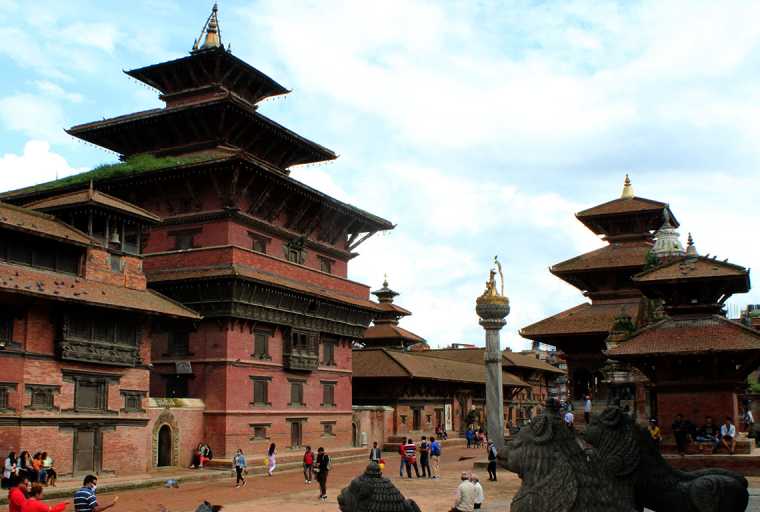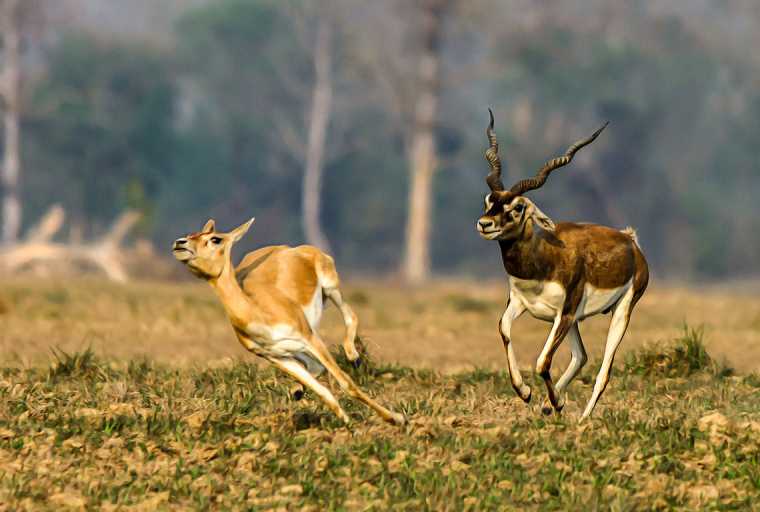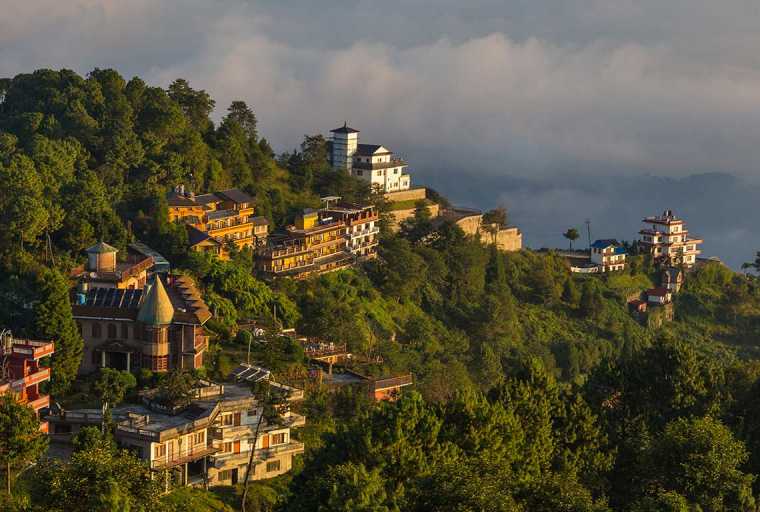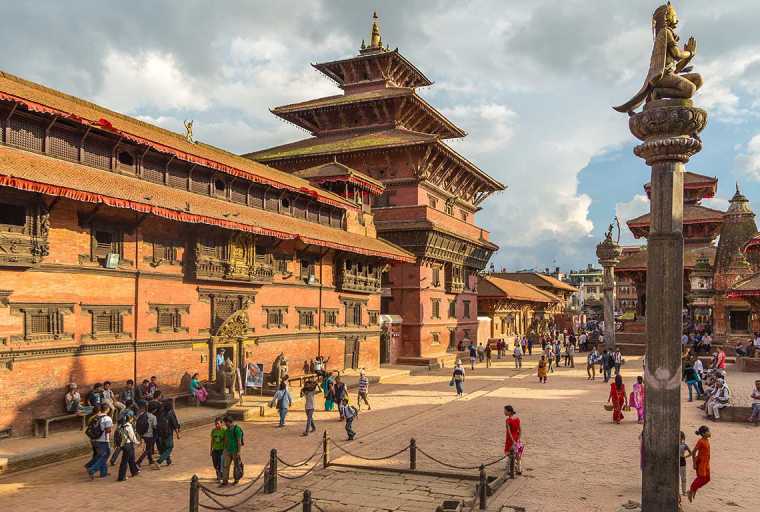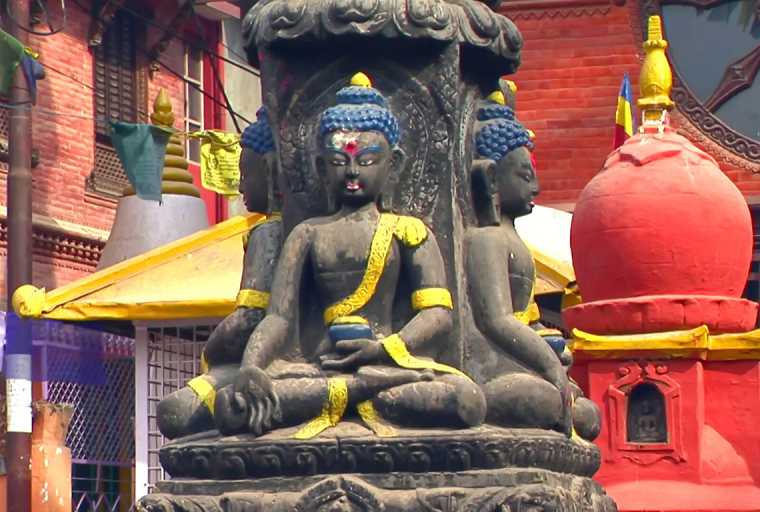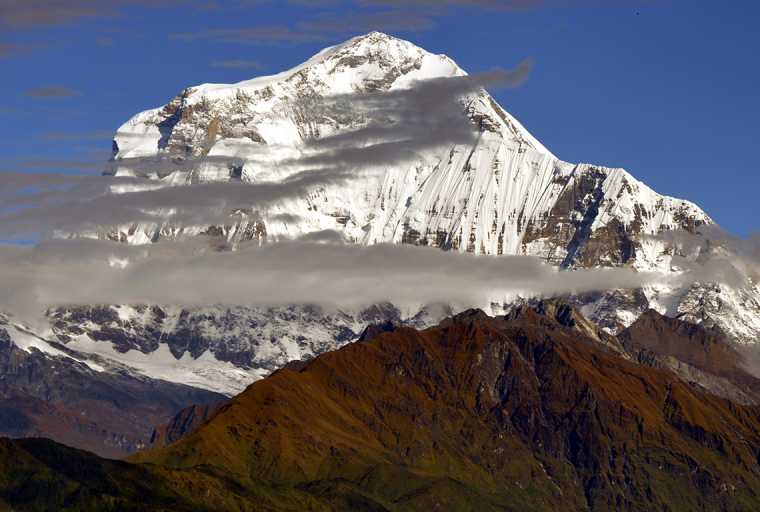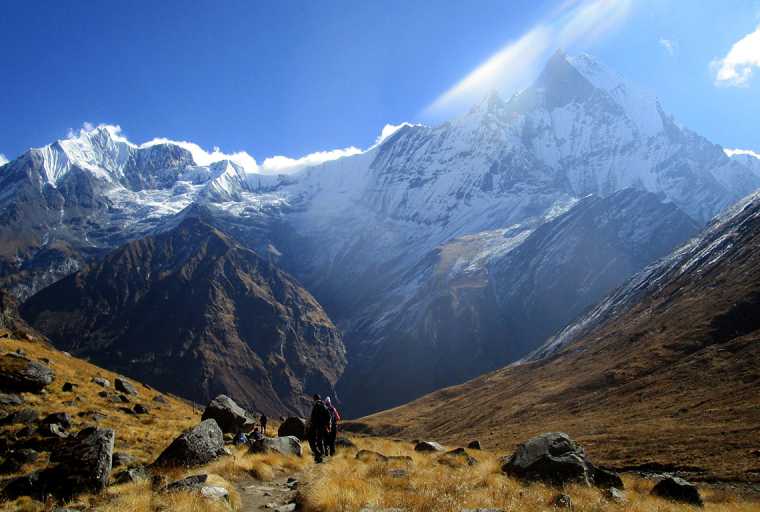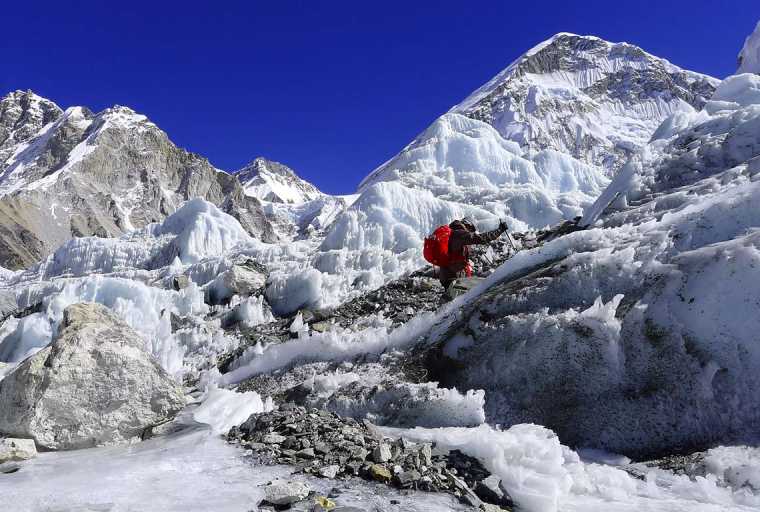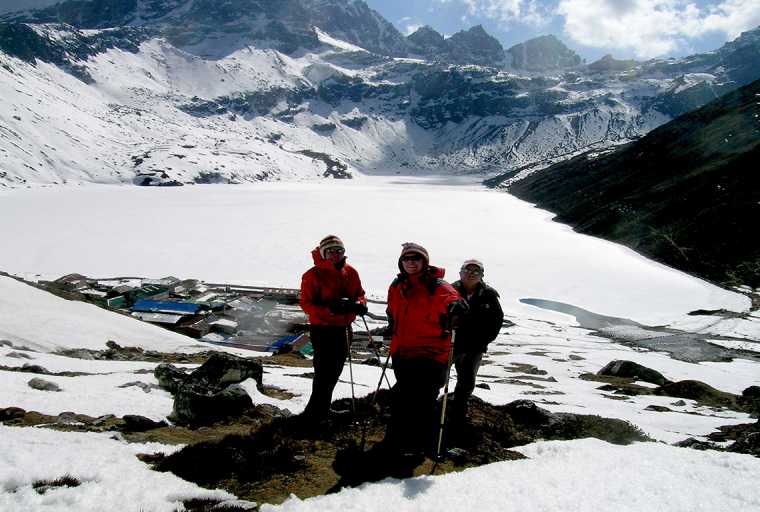Packing List For Nepal Bhutan Tibet Tour
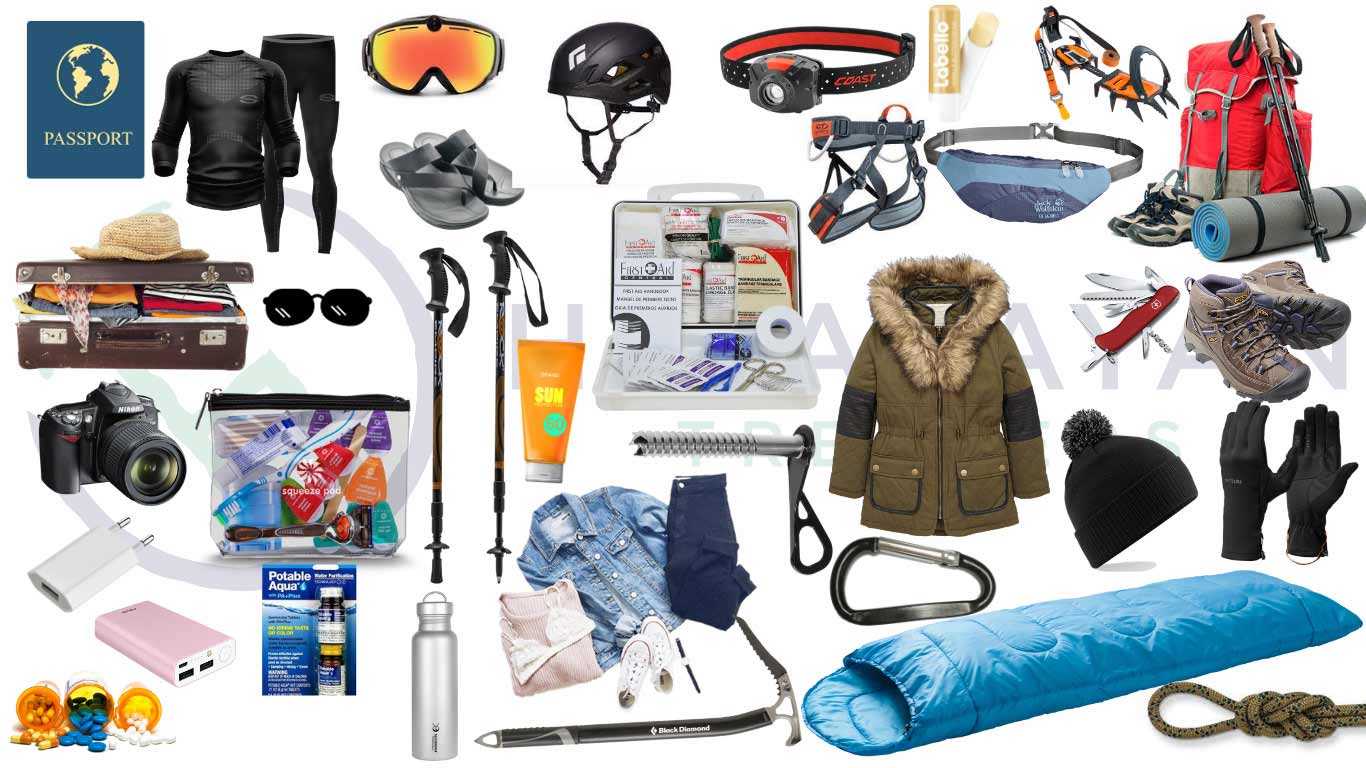
Embarking on a journey through the mesmerizing Himalayan Kingdoms of Nepal, Bhutan, and Tibet is a dream come true for adventurous souls. Each country offers unique cultural experiences, breathtaking landscapes, and spiritual encounters. As you prepare for this once-in-lifetime trip, it's essential to pack wisely, considering the diverse climates and altitudes you will encounter.
So, no more hassle researching separate packing lists for your Nepal, Bhutan, and Tibet tour! We have got you covered with a comprehensive packing overview that suits all three countries. While each country offers its unique charm, there are a few key considerations to remember. These include:
Altitude Variation: Among these enchanting destinations, Tibet stands out with its lofty altitudes. The thin air may pose challenges as you ascend into the breathtaking Tibetan Plateau. Prepare yourself by packing essential items for high-altitude conditions, such as altitude sickness medication, warm clothing, and comfortable footwear suitable for walking on uneven terrain.
Temperature Fluctuations: The three countries exhibit varied temperatures due to their geographical diversity. Nepal showcases a mix of climates, ranging from the warm plains of Terai to the cold Himalayan regions. Bhutan boasts pleasant weather with cooler temperatures in higher elevations. Meanwhile, Tibet experiences cooler temperatures, especially at night. So, plan for layering options to accommodate temperature fluctuations and pack accordingly. Include lightweight, breathable clothes, warm layers, and a good-quality jacket.
Universal Essentials: Despite these slight differences, you can include numerous universal essentials in your packing list. These items include travel documents (passports, visas, and permits), comfortable walking shoes, a good backpack, a first-aid kit, toiletries, a reusable water bottle, sunscreen, insect repellent, a hat, sunglasses, a camera, and chargers.
Tailor Your Packing: Personalize your packing list based on your specific activities and preferences. If you plan hiking, pack appropriate gear such as sturdy hiking boots, moisture-wicking clothing, and a reliable backpack. Additionally, if you intend to explore cultural sites or visit temples, modest clothing that covers shoulders and knees is recommended as a sign of respect.
The comprehensive packing list below will guide you through the must-have items for your Nepal, Bhutan, and Tibet tour.
1. Essentials Travel Documents and Money
Visa and Permits
Nepal
- Tourist visas for Nepal are generally available upon arrival at Kathmandu International Airport or different land border crossings for most nationalities.
- You can pay the visa fee in major currencies; a passport-sized photo is required.
- Tourist visas are usually issued for 15,30, or 90 days, with the option for extension within Nepal if needed.
Bhutan
- Travel to Bhutan requires a pre-arranged visa, and tourists must book their trip through an authorized Bhutanese tour operator.
- The tour operator will process the visa application on your behalf.
- A visa clearance letter will be issued, and you can then travel to Bhutan with the letter and your passport.
Tibet
- Travel to Tibet requires obtaining the necessary permits and visas from the Chinese authorities.
- If you plan to travel to Tibet, you must obtain a Chinese visa first, usually through the Chinese Embassy or Consulate in your home country.
- In addition to the Chinese visa, you also need a Tibet Travel Permit (also known as the Tibet Entry Permit), organized by a registered travel agency in Tibet.
Valid Passport
To enter Nepal, Bhutan, and Tibet, you will need a valid passport with at least six months of validity. It is essential to check your passport's expiration date. Ensure your passport meets the validity requirement before traveling to these countries.
Photocopies
Carry multiple copies of your passport, visas, permits, and travel insurance. Store them separately from the originals.
Money
When traveling to Nepal, Bhutan, and Tibet, it is essential to carry cash as it may be challenging to find ATMs to use your credit or debit card. These countries have different currencies, and each has its monetary system. In Nepal, the currency is the Nepalese Rupee (NPR). Cash is widely accepted in most places, especially in rural areas where electronic payment options may be limited. Having enough cash in NPR to cover your expenses throughout your journey is essential.
In Bhutan, the currency is the Bhutanese Ngultrum (BTN). Carry local currency for smaller purchases and remote areas. Some businesses and hotels may accept foreign currencies like US dollars or euros. The official currency in Tibet is the Chinese Yuan (CNY). Cash is widely used, and credit or debit cards may have limited acceptance, especially in rural areas or smaller towns. You must exchange your currency for the Chinese Yuan before entering Tibet to ensure you have sufficient cash for your needs.
Quick Tip: It's crucial to plan and carry enough cash in the local currencies of these countries to cover your expenses, including accommodations, meals, transportation, and any additional purchases or activities. Be sure to check with local banks or currency exchange offices for the most up-to-date exchange rates and availability of currency exchange services.
2. Clothing
When it comes to clothing, consider packing the following items:
Long pants (zip-off pants are handy)
They provide coverage and protection against insects. Also, zip-off options allow you to convert them into shorts when it gets warmer.
Shorts, mid-thigh or longer
Ideal for hot and humid climates, they offer comfort and breathability.
Short-sleeved shirts
Perfect for warm weather, they keep you cool and allow for ease of movement.
Long-sleeved shirts
These offer protection from the sun, bugs, and cooler temperatures.
Warm sweaters
These provide warmth and insulation when the temperature drops. Choose lightweight options that can be easily layered over your shirts.
Rain jacket or rain poncho
Essential for protection against unexpected rain showers. Opt for waterproof and breathable materials to stay dry and comfortable.
Down jacket or insulated jacket (for higher altitudes)
As you venture into higher altitudes with colder temperatures, having a warm and insulating layer like a down jacket or insulated jacket becomes crucial. It helps trap heat and keeps you cozy in cold environments.
Thermals
Thermal tops and bottoms as base layers provide warmth and insulation in cold weather.
Socks and gloves
Pack socks to keep your feet warm and protected. Gloves will keep your hand cozy during colder weather or outdoor activities.
Hat and bandana
Shield yourself from the sun's rays with a hat that offers sun protection. A chin strap will keep it secure during windy conditions. Bandana is a versatile accessory that serves multiple purposes. Use it for protection against dust, as a washcloth, or even as a makeshift headband.
Undergarments
Choose moisture-wicking underwear to keep you comfortable and prevent chafing.
Women bras
Don’t forget to pack comfortable and supportive bras to ensure comfort and proper support throughout your journey.
Comfortable sleepwear
Include comfortable sleepwear in your packing list for a good night’s rest and relaxation during your travels.
Swimsuit
Pack a swimsuit to enjoy soaking in hot springs or for any water-related activities.
Quick Tip: Remember to adapt your clothing choices based on the specific weather conditions and activities you will engage in during your journey. Layering is essential to adjusting to temperature changes and ensuring comfort throughout your adventure.
3. Footwear
Footwear plays a crucial role in ensuring a comfortable and enjoyable journey. Here is a breakdown of the recommended footwear for your trip:
Sturdy, comfortable walking shoes (closed toe, preferably waterproof)
These are a must-have for exploring diverse terrains and navigating through uneven surfaces. Opt for shoes with good traction and ankle support to tackle steps and rough ground. Waterproof features can be beneficial in case of unexpected rain or wet conditions.
Sandals
Consider bringing a pair of comfortable sandals for relaxation and casual outings, especially in warmer regions or during leisure time at lodges. Choose ones with good arch support and straps for stability.
Dressy shoes
If you plan to dine at upscale restaurants or attend formal events, it's worth including a pair of dressy shoes that match your evening attire.
Flip flops
Perfect for wearing around your accommodation, flip flops are convenient for showering or lounging in comfort.
Quick Tip: Even though there may not be extensive trekking, you will still encounter various walking surfaces and steps while sightseeing. Having a solid and comfortable pair of boots is recommended. But you don't need heavy-duty hiking boots. Lightweight boots that offer support and protection will suffice. Sneakers or sleepers can also be helpful for indoor comfort at lodges or guesthouses. Choose shoes that fit well and have been broken before your journey to avoid discomfort or blisters.
4. Toiletries- Personal Hygiene
When traveling to the Himalayan kingdoms of Nepal, Bhutan, and Tibet, prioritize personal care and hygiene. These regions have diverse landscapes and remote areas. Here's a comprehensive list of personal hygiene items to include in your packing list for all three countries:
Soap, shampoo, conditioner, and hair gel (in small travel-size containers)
These essentials will keep you feeling fresh and clean throughout your journey.
Hairbrush, compact mirror, and hair ties
Carry these items to maintain your hair and keep it neat.
Toothbrush and a small toothpaste
Maintain good oral hygiene with a travel-sized toothbrush and toothpaste.
Deodorant and body powder
Stay fresh and combat perspiration during your travels.
Face wash
Keep your face clean and rejuvenated by bringing a gentle face wash suitable for your skin type.
Toilet paper, a small towel, facial tissues, and wet wipes
These items are essential for personal hygiene, as restroom facilities vary in remote areas.
Hand sanitizer
Maintains hand hygiene in situations where soap and water are not readily available.
Feminine hygiene products
Pack an adequate supply of feminine hygiene products for your journey if applicable.
Quick Tip: Remember, these personal care and hygiene items will help ensure your comfort and well-being during your travels through Nepal, Bhutan, and Tibet. Adapt the quantities based on the duration of your trip and the availability of these items in remote areas. Stay clean, refreshed, and ready to embrace the beauty of these enchanting Himalayan kingdoms.
5. Medication and Health Kit
Including various health kit items is essential when exploring Nepal, Bhutan, and Tibet. Here's why each item is essential:
Personal medications in their original containers
Carrying your prescribed medications is essential if you have any pre-existing medical conditions.
Small first aid kit with basic supplies (band-aids, antiseptic cream, pain relievers, etc.)
Essential for treating minor cuts, blisters, and abrasions that can happen while hiking or exploring. Also, include over-the-counter pain relievers like ibuprofen or acetaminophen to relieve headaches or general aches.
High-altitude sickness medication (consult your doctor)
If traveling to high-altitude destinations, consult your doctor and consider carrying medication specifically for high-altitude sickness.
Diarrhea medicine
Have diarrhea medicine on hand to manage any digestive issues during your trip.
Motion sickness medicine
If prone to motion sickness, take medicine to alleviate symptoms during transportation.
Allergy medicine
Bring allergy medicine if you have known allergies to manage any allergic reactions while traveling.
Insect repellent
Protect yourself from insect bites by applying insect repellent to exposed skin or clothing.
Water purification tablets or a water filter bottle
Ensure access to clean drinking water when the source may be questionable. Also, you can carry a water filter bottle for emergencies or areas with questionable water quality.
Quick Tip: Including these items in your health kit helps you prepare for common health issues and minor injuries that may arise while exploring these three countries. Before your trip, consult a healthcare professional for personalized advice and recommendations.
6. Accessories
Accessories are essential additions to your travel essentials, providing convenience, comfort, and functionality throughout your journey. Here are a few types of accessories you should consider carrying:
Sunglasses with UV protection
Protects your eyes from harmful sun rays with sunglasses that have UV protection.
Sunscreen with a high SPF
Safeguard your skin from sunburn by using sunscreen with a high SPF.
Lip balm
Protect your lips from dryness caused by the elements, particularly in colder regions.
Earplugs
Bring earplugs to help you sleep better in noisy hotels or transportation.
Day backpack
Carry your essentials during excursions with a convenient day backpack.
Money belt or pouch
Keep your valuables safe by using a money belt or pouch.
Portable flashlight or headlamp
A portable flashlight or headlamp is essential for providing light in low-visibility situations. Whether camping, exploring caves, or encountering power outages, having a reliable light source can significantly enhance your safety and convenience.
Quick Tip: Ensure they meet your needs and preferences when choosing accessories. Consider factors such as comfort, durability, and suitability for the destination.
7. Electronics
When traveling to Nepal, Bhutan, and Tibet, carrying your photography essentials is vital to capture beautiful moments. However, it's worth noting that in many rural areas of Nepal, Bhutan, and Tibet, access to electricity may be limited. Here are some essential electronics to consider:
Phone
Carry a phone and purchase a local SIM card with the assistance of your guide to stay connected and make calls as needed.
DSLR Camera with battery charger
If you're passionate about photography, bring your DSLR camera and its battery charger to capture high-quality images.
Earphones
Enjoy your favorite tunes or audio guides while exploring the scenic landscapes.
Extra memory card
Ensure you have enough storage space by carrying an extra memory card to capture all the memorable moments.
Power bank/solar power bank
By carrying a power bank or solar-powered charger, you can keep your devices charged even when access to electricity is limited.
Plug adapter
Charge your electronics in different countries with a travel adapter. The power sockets in these countries are mostly D, F, and G, so having a plug adapter will allow you to charge your devices without any issues.
Quick Tip: Remember to pack and use your electronics responsibly and be mindful of local customs and regulations. Always respect the privacy of individuals when taking photographs.
8. Miscellaneous
Miscellaneous items are necessary to enhance your travel experience by providing convenience, safety, and comfort. Here are some miscellaneous to consider:
Travel guidebooks and maps
Carry travel guidebooks and maps to gain insights into your destinations. It will help you to discover local attractions and navigate unfamiliar areas effectively.
Reusable water bottle
Staying hydrated during your tour is essential. So, carrying water bottles ensures you can drink water wherever you are. Also, it helps to reduce plastic waste.
Lightweight travel towel
A lightweight travel towel is compact and quick drying, making it perfect for travel. It is handy for drying off after swimming, visiting hot springs, or during outdoor activities.
Ziplock bags for organizing and waterproofing items
Use zip lock bags to keep your belongings organized, protect them from moisture, and separate wet or dirty items from the rest of your luggage.
Trekking poles
If you plan to trek or hike, consider bringing trekking poles. It provides you stability, balance, and reduced strain on your joints. They are beneficial on uneven terrains.
Sleeping bag
If you embark on specific treks or camping adventures, check if a sleeping bag is necessary. A suitable sleeping bag ensures comfort and warmth during overnight stays in outdoor settings.
Quick Tip: When packing miscellaneous items, prioritize versatility and practicality. Consider the specific needs of your destination and activities. Be mindful of weight and space limitations and focus on packing items that offer your trip the most value and utility.
Download the packing list PDF
Here you can download the Nepal Bhutan Tibet packing list conveniently as PDF.
FAQs
What is the weather like in Nepal, Bhutan, and Tibet?
Nepal experiences a diverse range of climates due to its varying topography. In general, Nepal has four main seasons:
- Spring (March to May)
- Summer/monsoon (June to August)
- Autumn (September to November)
- Winter (December to February)
The weather is mild and pleasant in spring, with occasional rain showers. Summer brings the monsoon, characterized by heavy rainfall, especially in the southern part of the country. Autumn is the best time to visit Nepal. The weather is generally clear and stable, with mild temperatures and beautiful landscapes. Winter brings colder temperatures, particularly in higher elevations, with snowfall occurring in mountainous regions.
Bhutan's climate is also diverse, influenced by its varying elevations and geographical features. The country has three main climatic zones: the southern plains, the central valleys, and the northern Himalayas. In the southern plains, the climate is subtropical, experiencing hot and humid conditions during the summer monsoon season. The central valleys have a temperate climate, with mild summers and cold winters. The northern Himalayas have an alpine climate, with cooler temperatures and the possibility of snowfall in higher elevations.
Tibet has a high-altitude plateau climate characterized by cold temperatures and low oxygen levels due to its average elevation of over 4,000 meters (13,000 feet). The region experiences long, harsh winters, with temperatures dropping below freezing. Summers are short and cool, with occasional rainfall. The air is generally dry throughout the year due to Tibet's high altitude.
Is altitude sickness a concern in Tibet?
Altitude sickness is a concern in Tibet due to its high elevation. Tibet has an average altitude of over 4,000 meters, which can affect the body. These effects may include headaches, dizziness, nausea, and fatigue. In severe cases, altitude sickness can lead to pulmonary or cerebral edema. It is essential to consult a doctor before traveling to Tibet, as they can provide guidance and prescribe altitude sickness medication. Packing altitude sickness medication is also recommended as a precautionary measure. Remember to acclimatize slowly, stay hydrated, and know the signs of altitude sickness. If any symptoms occur, seek medical help promptly.
Are there any dress codes or cultural considerations in these countries?
Nepal, Bhutan, and Tibet have specific dress codes and cultural considerations to keep in mind. When visiting religious sites in Nepal, it is essential to dress modestly and respectfully. Both men and women are advised to cover their shoulders and avoid revealing clothing. In some temples, it may be required to remove your shoes before entering. Additionally, touching or pointing at religious objects or statues with your feet is disrespectful.
In Bhutan, traditional attire is highly respected and appreciated. When visiting religious sites, such as temples or dzongs, it is customary to wear modest clothing. Wearing long pants and covering your shoulders is recommended for both men and women. Wearing hats or sunglasses inside religious buildings is generally not permitted. It is also important to ask for permission before taking photographs of people, religious objects, or ceremonies.
When visiting monasteries, temples, or other religious sites, it is respectful to dress modestly in Tibet. Both men and women should cover their shoulders and avoid wearing revealing clothing. Wearing hats or sunglasses inside religious buildings is generally not allowed. It is important to be mindful of local customs and traditions. Also, seek permission before taking photographs, especially of monks or religious ceremonies.
Final Words
In conclusion, when embarking on a combined tour of Nepal, Bhutan, and Tibet, remember to pack essential items such as appropriate clothing for varying climates, a well-equipped health kit, sufficient cash due to limited access to ATMs, and necessary electronics for capturing unforgettable moments. Additionally, be respectful of local customs, embrace the breathtaking landscapes, and immerse yourself in the unique cultures of these great Himalayan kingdoms. Safe travels and enjoy your unforgettable journey!

